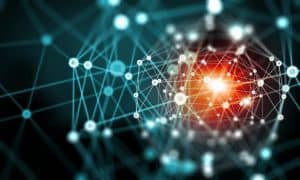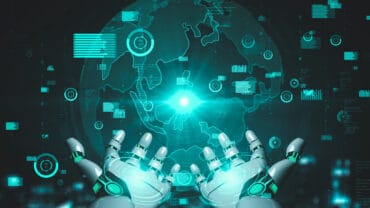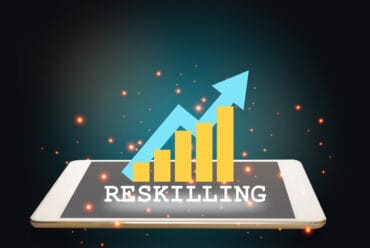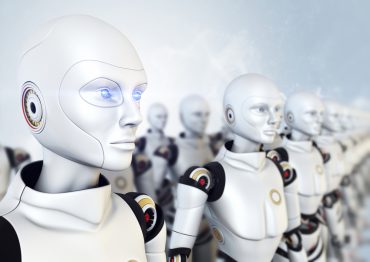
On the skills front, utilities must look to foster a digital culture that encourages continuous learning, agile development, and innovation.
The digital transformation of energy utilities is well underway. Sensors and smart grids are already widely deployed. Renewables and other parts of the distributed microgrid are being integrated. Distributed energy resource management systems (DERMS) that leverage artificial intelligence (AI) and machine learning (ML) are being adopted. The overarching communications network, which will migrate to 5G over the next decade, is playing an increasingly important role as part of this digital transformation. As such, energy utilities will need a workforce with suitable digital skills.
This trend toward digitalization raises an important question. Do power utilities have the deep understanding of networking, cloud computing, and software analytics that will be required in their future? They are already facing workforce attrition, which is creating a substantial knowledge gap, while simultaneously experiencing difficulty recruiting younger generations into field operational roles. Add to this a society-wide shortage in software and other digital skillsets, and utilities find themselves in a dilemma. They need to adopt digital technologies, but can they find the people to help them get there?
See also: Energy Industry Changes Require Continuous Intelligence and AI
The digital grid needs digital skills
Data analytics and private wireless networks are changing the way utilities operate. As renewables and fast frequency reserves grow in importance, utilities are using advanced connectivity and data analytics to automatically ramp, balance, diagnose, and heal the distributed microgrid faster and more efficiently. DERMS are adopting technologies such as AI and ML to bolster their data analytics capabilities, enabling them to make quicker decisions and even predict outcomes.
Connected by mission-critical wireless networks, streams of digital data generated by connected assets, smart meters and grid sensors, as well as outside sources such as weather, are processed by AI/ML-based algorithms. Derived from historical data, these analytic models, in turn, designate the most efficient use of each grid asset and manage two-way power flows. They can even predict demand response for both industrial and residential consumers and match the most efficient use of generation sources, lowering fuel costs, and reducing carbon emissions.
This same streaming sensor data can also generate near-real-time awareness of potential disruptions. Whether disruptions come from natural sources such as wildfires and storms or the introduction of new services such as electric vehicle charging, rooftop solar, or home batteries, data analytics will identify what is happening at the edge of the grid.
This end-to-end awareness of grid demand and production also enables better management of energy transactions with bordering utilities. Algorithmic trading of energy, which has already moved from day-ahead pricing to intra-day pricing at up to 15-minute intervals, will only get faster. The EU, for instance, is in the process of consolidating its national energy grids and has set a target of 70% of power on the open market as a way to spur renewable energy production and ensure the availability of renewable energy to all member countries.
Industrial-strength wireless
Critical to the adoption of these big data technologies is the availability of a new breed of private wireless technologies. Until recently, many utilities employed application-specific wireless field area networks (FANs) utilizing narrowband and broadband point-to-point (PTP) and point-to-multipoint (PTMP) systems, as well as broadband mesh networks. But there is now an emerging consensus that cellular technologies such as 4G/LTE and, in the near future, 5G, are the foundation for the next-generation FAN.
4G/LTE has the security and reliability needed for mission-critical networks and supports very high bandwidth and ultra-low latency as well. It also has specific support for IoT devices with narrowband IoT (NB-IoT) and LTE-M. This allows utilities to consolidate many separate application-specific networks onto a single 4G/LTE or 5G network — increasing efficiency and integration.
Overall, this highly connected automated intelligent grid from generation to the consumer is the key to utilities realizing reduced operations and maintenance costs, including improved system efficiency, reliability, and resilience. Asset lifetimes can be optimized, fuel waste reduced, carbon emission targets met, and cyber-security threats neutralized.
The digital workplace
The ubiquitous coverage and reach of these new FANs will enable data-driven analytics to be leveraged beyond microgrid management to power every kind of function. For instance, video surveillance by CCTV cameras — a decades-old technology — will be transformed by the addition of software-based “scene” analytics that will turn even older CCTV camera into sophisticated sensors that can spot anomalies and alert security or maintenance teams.
Stream-based asset management will leverage the power of AI and ML to help accurately predict time to failure of key assets. It will be used to develop digital twins of entire processes to better understand the highest risk assets, improve maintenance scheduling, and prioritize capital spending to lower risk across the operation.
4G/LTE and, in the future 5G, can empower workers with new capabilities. They replace mission-critical radio communications such as Tetra and P25 with new high-bandwidth terminals that add push-to-video and data communications to the usual professional mobile radio functions. With 5G, this will enable remote video assistance and augmented reality for just-in-time training and improve worker safety with connected smart PPE and video-enhanced object recognition to identify unsafe conditions. 4G/LTE and 5G also both support drone navigation and video transmission for drone reconnaissance during disaster restoration.
Meeting the digital skills gap
While all of this technological progress is promising, how do utilities manage the human resources side of the equation? Most North American and European energy utilities are struggling with replacing their aging workforce. Automation of many functions is one answer, but that only increases the need for digital skills.
At the same time, the rapid digitalization of a whole host of industrial sectors means that the competition for data scientists and software programmers is steep. They are often being hired by sectors that embraced digital decades ago. From finance to entertainment, there is also a shortage of programmers and analysts, and wages are highly competitive as a result.
Energy utilities are, in truth, no different than many other sectors currently undergoing digitalization. They can’t afford not to adopt digital technologies, but they’re struggling to recruit the people with the relevant skillsets – whether it is in networking, AI/ML, data analytics, or a host of related digital functions. Hard skills aside, with this degree of change occurring, utilities will also need soft skills in HR, change management, and communications to help deal with the disruption to their organizations.
Part of the solution to this problem is coordination with educational institutions. The utility sector needs to work closely with community colleges, trade schools, and even local public education institutions to help them design courses tuned to the special needs of the energy sector. To help them attract and retain graduates with the right digital skills, energy utilities should continue to offer apprenticeships, and coop positions to IT and engineers specialized in these areas. Hiring managers can entice new talent by working with HR and talent acquisition to design new positions for the skillsets relevant to the changing energy landscape.
The digital commitment
Energy utilities are in the process of a digital transformation. The demands of this transformation are high; new FANs take time to deploy. Streaming analytics using AI and ML are in the early stages. The use of edge cloud processing is just beginning. These technologies will wholly transform the way we work in many fields, but fortunately, the transitions in technologies and talent are just beginning. This is the good news. Things will move very fast, and to remain competitive and relevant, utilities and regulators need to make a strong commitment to digital.
On the digital skills front, utilities must look to foster a digital culture that encourages continuous learning, agile development, and innovation. They must have a vision for remaining at the forefront of digital practices and processes. And through these practices, energy providers will not only support traditional goals of safety, operational efficiency, and security, but they will also pave the way for a sustainable future with fresh new talent.




























